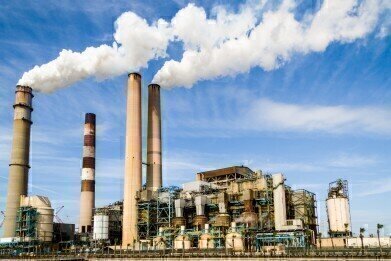Air clean up
What is Pollution Adaptation?
Sep 24 2015
There are two main ways to deal with the ever-increasing pollution that is contaminating our air, water and soil: mitigation and adaptation. Mitigation involves prevention of the problem before it arises by reducing the amount of carbon emissions in our atmosphere. This can be achieved by switching from harmful fossil fuels to clean, renewable energy such as solar, wind and wave power and other sustainable means, as well as reducing traffic and changing individual daily habits.
Though mitigation is the ideal scenario as it effectively nips pollution in the bud before it becomes a problem, it is not always achievable. In China, for example, the extensive contamination levels in the air are well-documented. Even today, air pollution poses a serious threat to the country's health and ecosystem, and though solutions are being discussed, movements to curb carbon emissions would involve a seismic change in national policy.
As a demonstration of just how much China would have to adapt and how heavily they currently rely on fossil fuels and other damaging power sources, Chinese power plants emit as much NOx as all of the passenger cars in the world combined. Clearly, mitigation would involve a huge amount of expense and effort (China has already spent more on reducing NOx than any other country in recent years, but their problems persist).
Adaptation as a Solution
As well as attempting to curb harmful emissions, the Chinese government and the private sector are looking into adaptation solutions. This basically means engineering remedies to deal with the contamination already present in the air, rather than preventing it from entering the atmosphere in the first place.
One such solution has been pioneered by Sino Green, the CSR branch of a Hong Kong property developer in tandem with Arup, an engineering company. Working together, the two bodies have come up with an innovative way to reduce human exposure to the harmful pollutants that dominate air in Hong Kong and cities across China and Asia.
The City Air Purification System is reminiscent of an ordinary bus stop, with three open sides and a roof above. However, at the edges of the roof, currents of filtered air are propelled downwards, “washing” those inside the structure and protecting them from the dangerous contaminants in the atmosphere.
The stands can house up to 20 people and in trials in Hong Kong, has been proven to reduce particulate matter (PM2.5) in the air by up to 70%. It is being moved to Beijing for further testing and if all goes well, could provide a model for pollution adaptation in similarly polluted cities in the future.
Prevention Better than the Cure
Of course, in an ideal world, we wouldn’t have to manufacture clean air stands to protect us from the filth in the environment that is almost entirely of our own making. However, in some locations (including many in China), air pollutions are so astronomically high that inhabitants are exposed to dangerously high levels for 8,000 out of 8,760 hours on an annual basis (well over 90% of the time).
Clearly, addressing such deeply polluted air is an ongoing issue that will take years of investment in order to rectify. In the meantime, adaptation solutions (such as the City Air Purification System) could be a viable stopgap.
Events
May 18 2025 Algiers, Algeria
23rd International Water Management Exhibition
May 20 2025 Prague, Czech Republic
Singapore International Water Week Spotlight 2025
Jun 23 2025 Singapore
Jun 25 2025 Sao Paulo, Brasil
Jul 02 2025 Bangkok, Thailand














